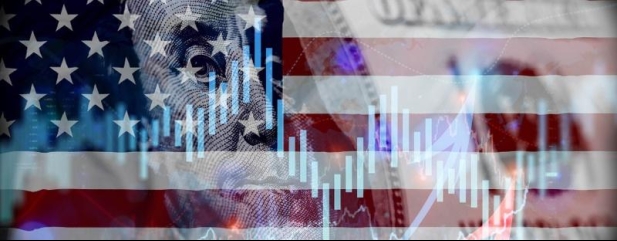Archived article
Please note that tax, investment, pension and ISA rules can change and the information and any views contained in this article may now be inaccurate.
What the narrowest corporate bond spreads in two decades mean for investors

As the Federal Reserve signals the start of an interest rate cutting cycle aimed at recalibrating monetary policy, yields remain relatively high by recent historical standards. For example, 10-year US treasuries have a current yield a smidge above 4%.
Investors looking to grab some extra yield compared with US treasuries, can purchase investment-grade corporate and high yield or ‘junk’ bonds. The spread investors earn on high yield bonds is a proxy for default risk.
The high yield spread narrowed last week to 2.89 percentage points, its lowest gap since mid-2007 as investors increasingly bet the Fed has successfully engineered a soft landing.
Mike Scott, head of global high yield at Man Group (EMG) concurs: ‘Broadly speaking, the market is entirely priced for a soft landing.’
Meanwhile investment grade bond spreads have narrowed to 0.83 percentage points, levels not seen since March 2005, according to ICE BofA data.
While bond fund managers acknowledge there is not much ‘value’ to be had in the ‘spread’ component, they highlight the relatively high yields on offer compared to recent history.
For example, high yield bonds yield just shy of 7%, their highest since 2012 and investment grade bonds yield just over 5%, a level last seen 20 years ago.
The lower spreads reflect increased demand as investors look to lock in higher yields. ‘You’re seeing tremendous demand for anything credit-related,’ says fund manager Bill Zox at Brandywine Global Investment Management.
But what if the Fed does not cut interest rates as expected?
Economists’ views on the direction of inflation and economic growth differ widely. Apollo chief economist Torsten Slok thinks the idea the Fed must lower interest rates in response to lower inflation is misguided. It is financial conditions that matter, he says.
With US stocks at record levels and very tight credit spreads, September’s half a percentage point interest rate cut by the Fed makes financial conditions even easier.
‘The risk with cutting interest rates too much too quickly is that the economy becomes too hot again,’ argues Slok.
Some investors not only agree with the Apollo view but are backing it with real money.
Famed hedge fund manager Stanley Druckenmiller notched-up a staggering average annual return of 30% a year for three decades before closing his fund Duquesne Capital in 2010 to start his family office.
Druckenmiller’s latest move is a bold bet against US treasuries and the Federal Reserve. He is shorting (selling with the hope of buying back at a lower price) US treasuries in the belief that inflation remains persistently high, forcing the central bank to raise interest rates, rather than cut them.
Important information:
These articles are provided by Shares magazine which is published by AJ Bell Media, a part of AJ Bell. Shares is not written by AJ Bell.
Shares is provided for your general information and use and is not a personal recommendation to invest. It is not intended to be relied upon by you in making or not making any investment decisions. The investments referred to in these articles will not be suitable for all investors. If in doubt please seek appropriate independent financial advice.
Investors acting on the information in these articles do so at their own risk and AJ Bell Media and its staff do not accept liability for losses suffered by investors as a result of their investment decisions.
Issue contents
Feature
Great Ideas
Investment Trusts
News
- Why former stock market darling Fevertree Drinks has lost its fizz
- Baltic Classifieds is emulating Auto Trader and Rightmove in Eastern Europe
- What the narrowest corporate bond spreads in two decades mean for investors
- Budget likely to feature a raft of ‘stealth taxes’ to raise revenue
- The market is looking for Visa lawsuit clarity
 magazine
magazine








